Published Sep 7, 2019
Director's Log 213.214: Behind the Scenes of the Season 2 Finale
Director and Executive Producer Olatunde Osunsanmi explains why working on 'Discovery''s finale episodes felt like working on a feature film.
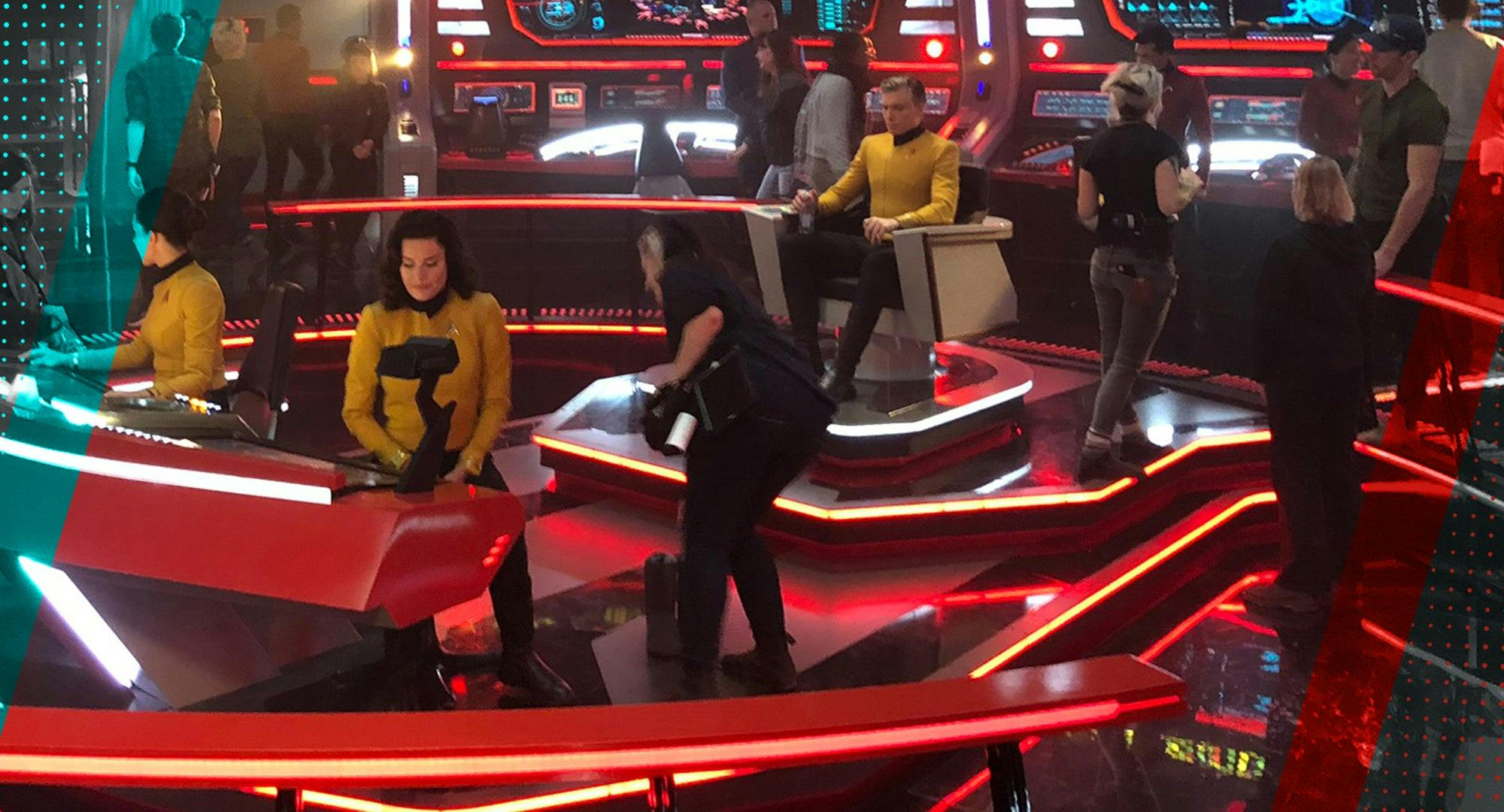
StarTrek.com
Spoilers for Star Trek: Discovery's season two finale to follow. Proceed with caution.
It was an early weekday morning when I got the call. A calm voice on the phone said, “Are you sitting down?” I said no. The voice said, “You should sit down… The finale doesn’t fit into one episode. I’m splitting it into two.” And that’s how Alex Kurtzman told me that Star Trek: Discovery’s finale would run the length of a feature film.
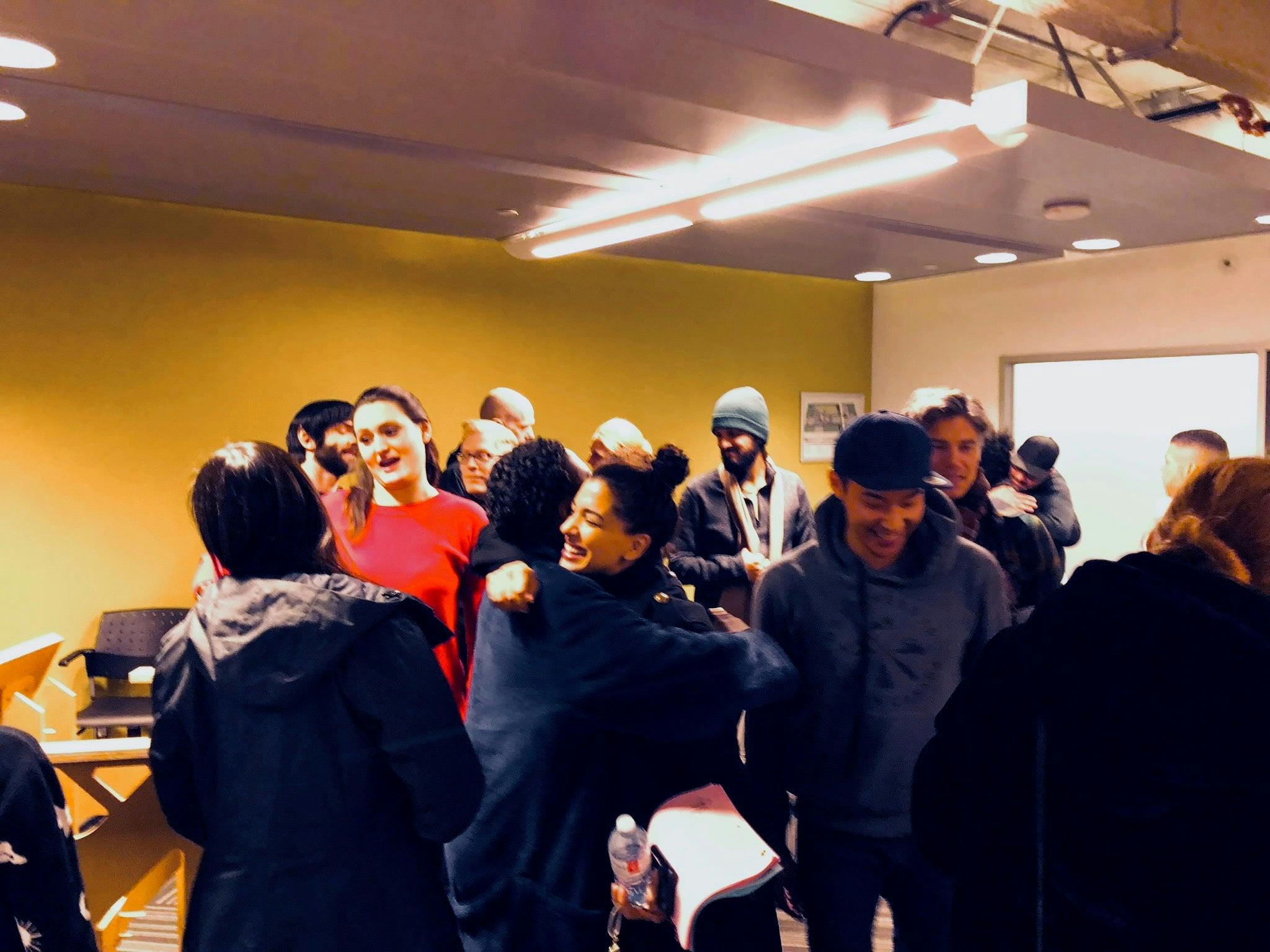
Olatunde Osunsanmi
Episode Prep
I was already scheduled to direct the finale, Discovery’s 13th episode of the second season, “Such Sweet Sorrow, Part 1” (213), and prep for that episode was around the corner. We quickly determined that I should direct 213 and the new 14th episode, — what would become “Such Sweet Sorrow, Part 2” (214) — because the stories were so intertwined.

startrek.com
The writing team of Alex, Michelle Paradise, and Jenny Lumet quadruple-timed their writing schedule and delivered us two scripts just seven days after the decision was made! After reading them, the crew and I knew immediately they had delivered something special.
But we had a challenge on our hands. The scripts were big! “Sorrow, Part 1” was huge on drama and emotion, while “Sorrow, Part 2” was big on war and action. And, honestly, I wasn’t helping matters much by continuing to pitch bigger action sequences.
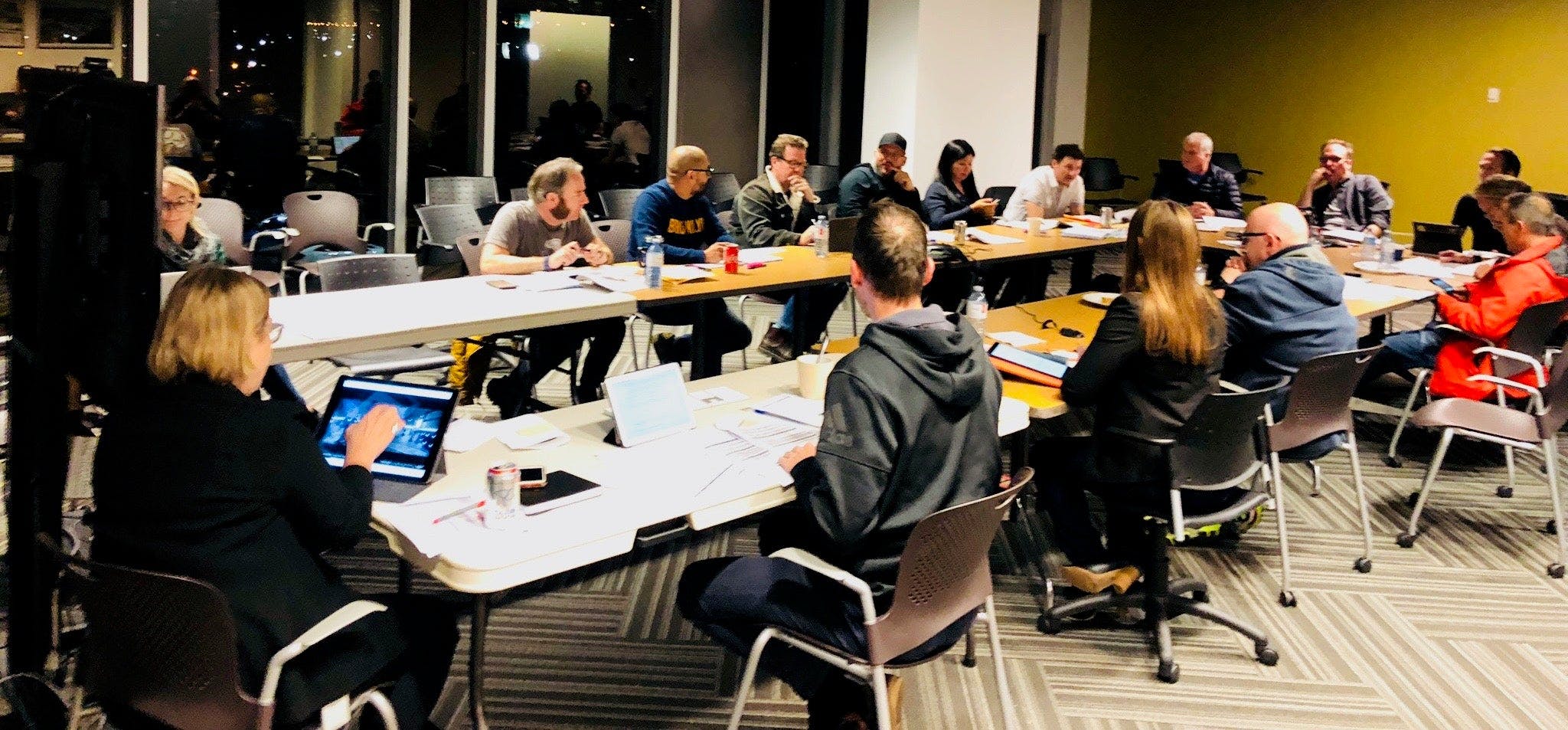
Olatunde Osunsanmi
We always have a lot of meetings on Discovery. Nevertheless, Patrick Tidy (first assistant director) and I knew that due to the size of 213/214, and the fact that we were block shooting, we were going to have many, many more meetings than we were used to — on set, at lunch, and even after we’d wrapped for the day. Visual effects meetings were a big part of the load. We had endless meetings with Jason Zimmerman (VFX Supervisor) and Ante Dekovic (VFX Supervisor) about the Red Angel, space battles, and Enterprise bridge screen and wall extensions. Rob McCallum (storyboard artist) and I generated 145 pages of storyboards to help these discussions along. The amount of VFX on our show is massive. In fact, that crew makes up our largest department at over 500 people strong, and they almost always end up having a hand — sometimes small, sometimes large — in helping other departments realize their Star Trek reality.
In addition to visual effects, we had a bunch of special effects meetings with Darcy Callaghan (Special Effects Supervisor). I would go over how many sparks, explosions, steam sources, and atmospheric effects we would need, where we would need them, and how often they would play. The effects for these two finale episodes were easily more than we had ever done before on Discovery. After one meeting we made fun of the number of notes Darcy had made in his scripts to track everything — I don’t remember him laughing. though.
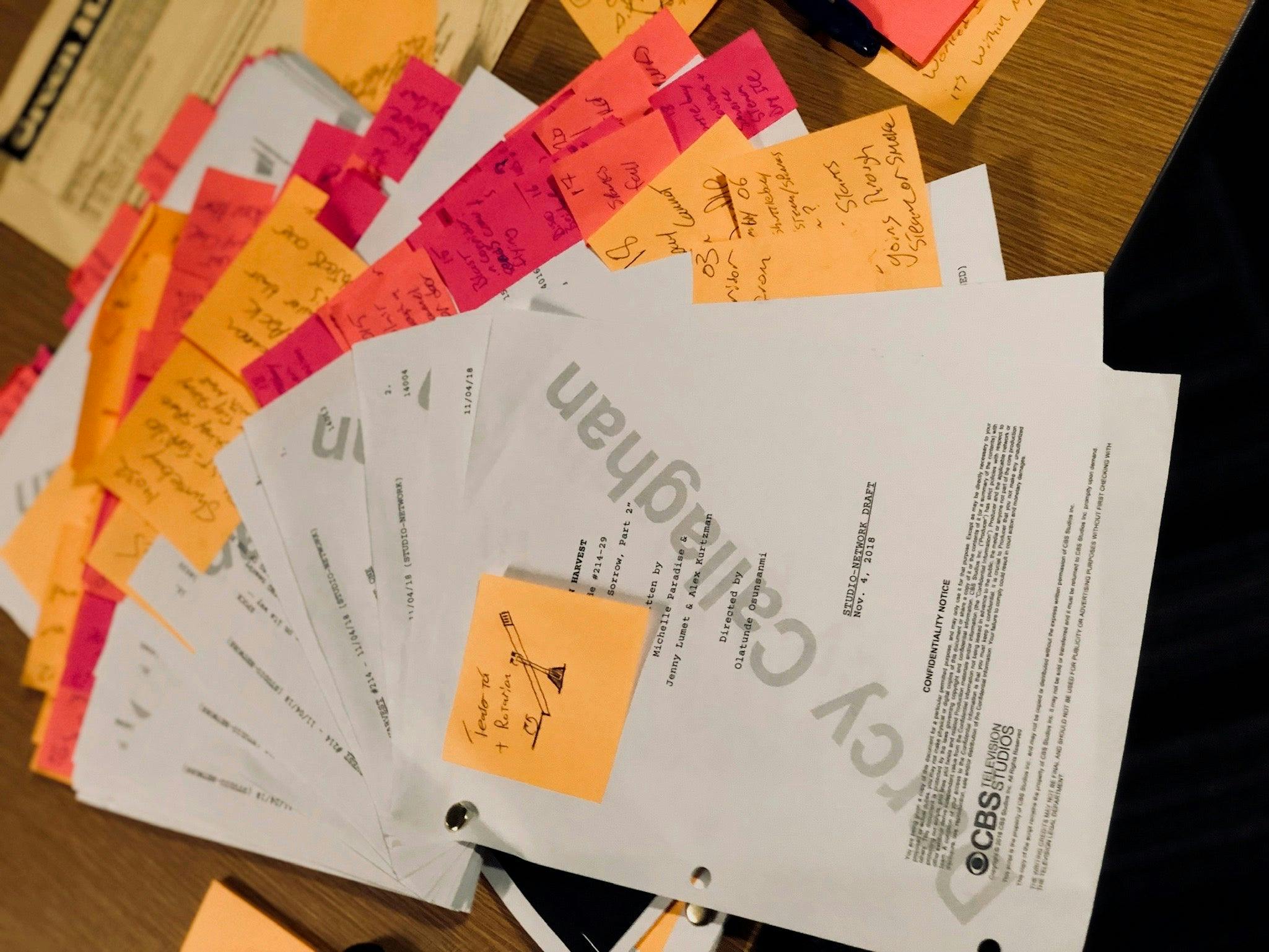
Olatunde Osunsanmi
Production
As I take you through the production of a few of the most crucial finale sequences, it may feel as though I’m going out of order. But, in actuality, I’m going in shooting order!
The first day of shooting we overlapped with episode 212, “Through the Valley of Shadows,” which Doug Aarniokoski was directing. As a producer/director, we usually try to make sure we’ve got hyper-experienced directors we trust going before us or after us, and Doug is easily one of those guys.
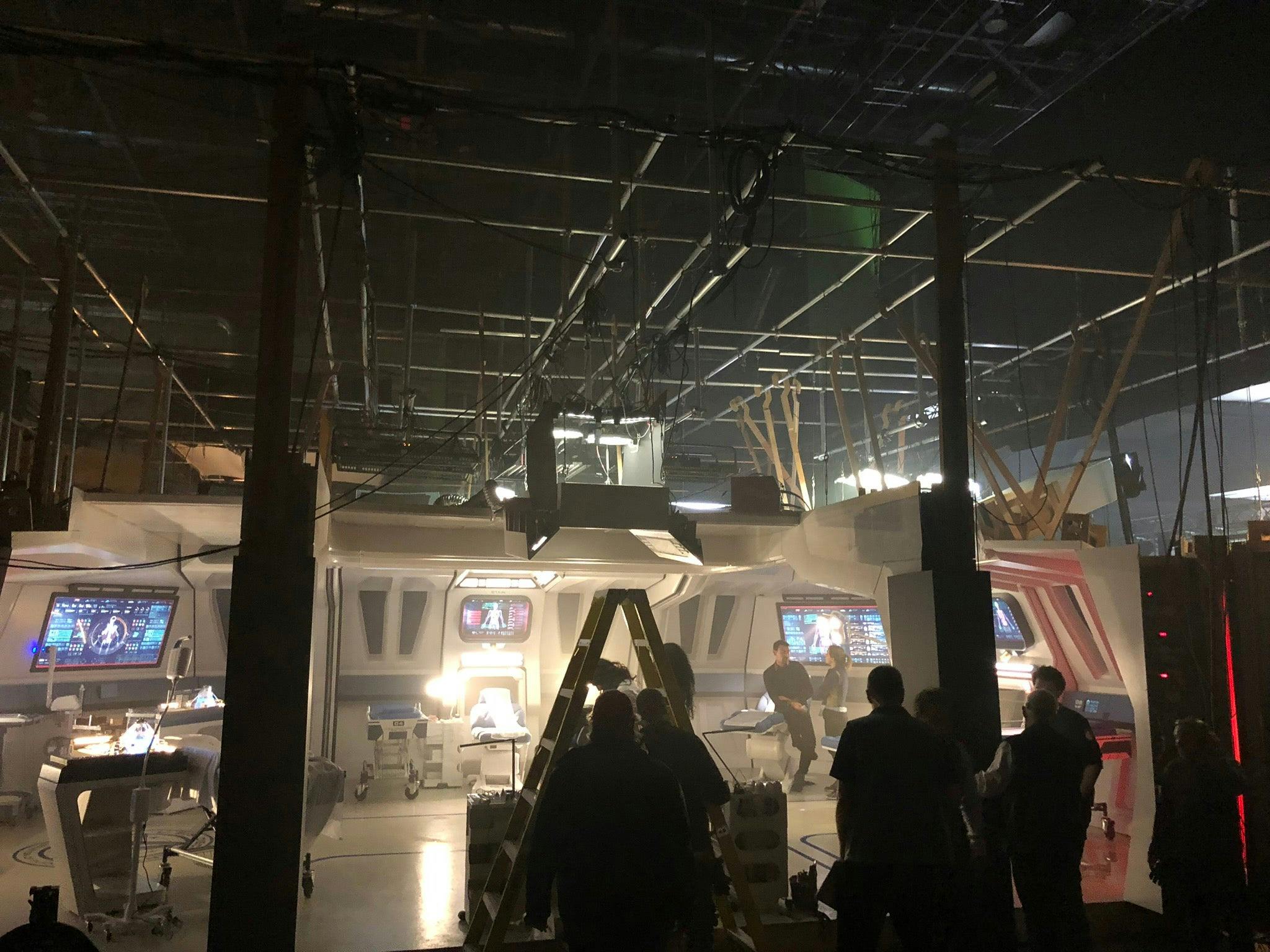
Olatunde Osunsanmi
We were shooting in sickbay with Anthony Rapp (Stamets), Wilson Cruz (Culber), and Raven Dauda (Pollard). Since we were block shooting, we shot all the 213 and 214 scenes on this set in the same day. While 213 was a drama, 214 was a full-on action movie; this required being sure I had my blocking and camera movements match the contrasting styles and emotions of both episodes. When it was all cut together, the visual design of each episode would land in the right place.
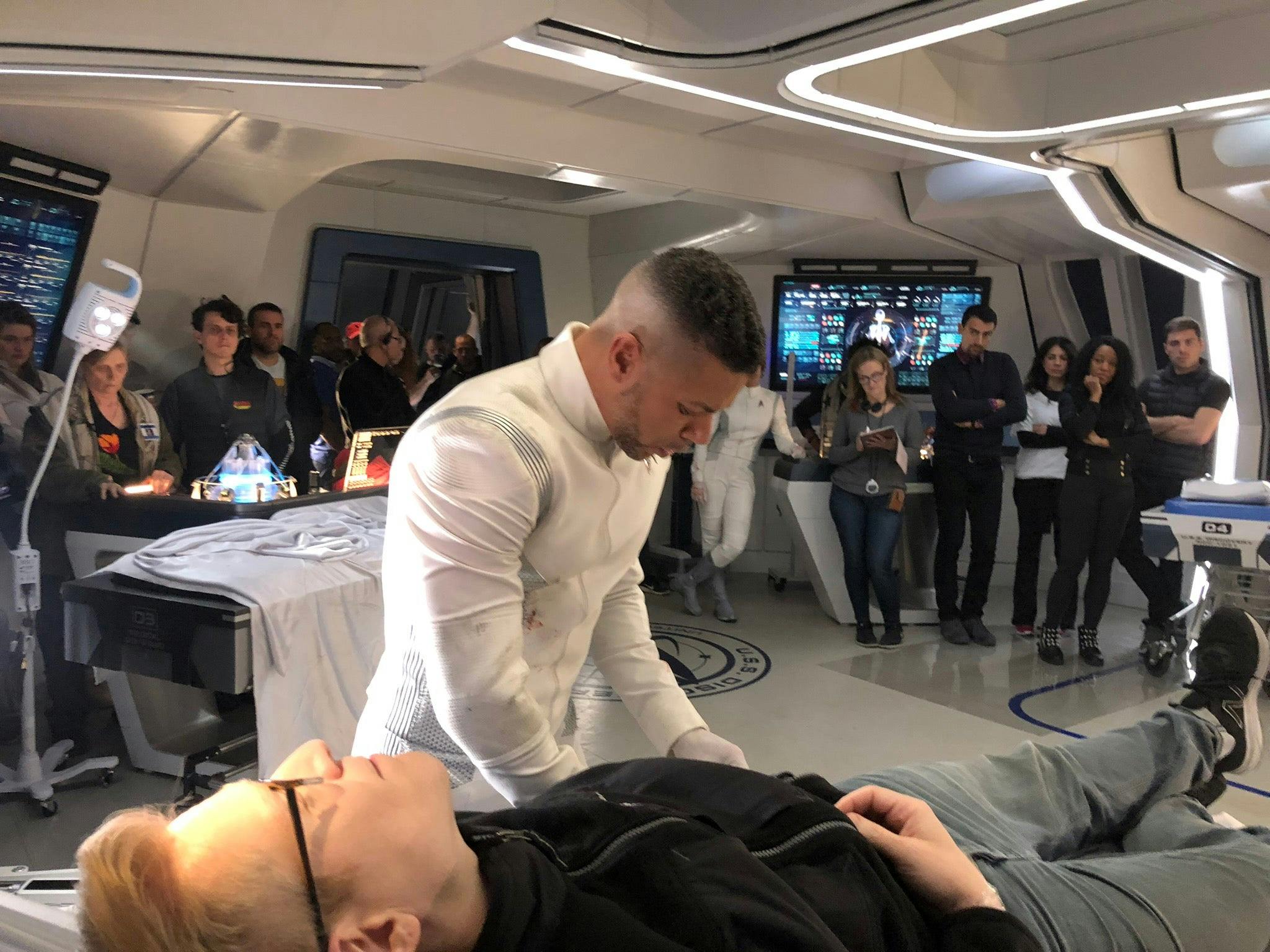
Olatunde Osunsanmi
Scenes with Anthony and Wilson are so easy as a director. I make sure to capture the moments between them as best I can, but otherwise I stay out of the way. For the first time on Discovery, we removed the entire right wall of the sickbay so I could get a larger wide shot. For 214, shooting that wide felt like it was necessary for the sheer epic-ness and emotion of the moment.
213. Vulcan Shore
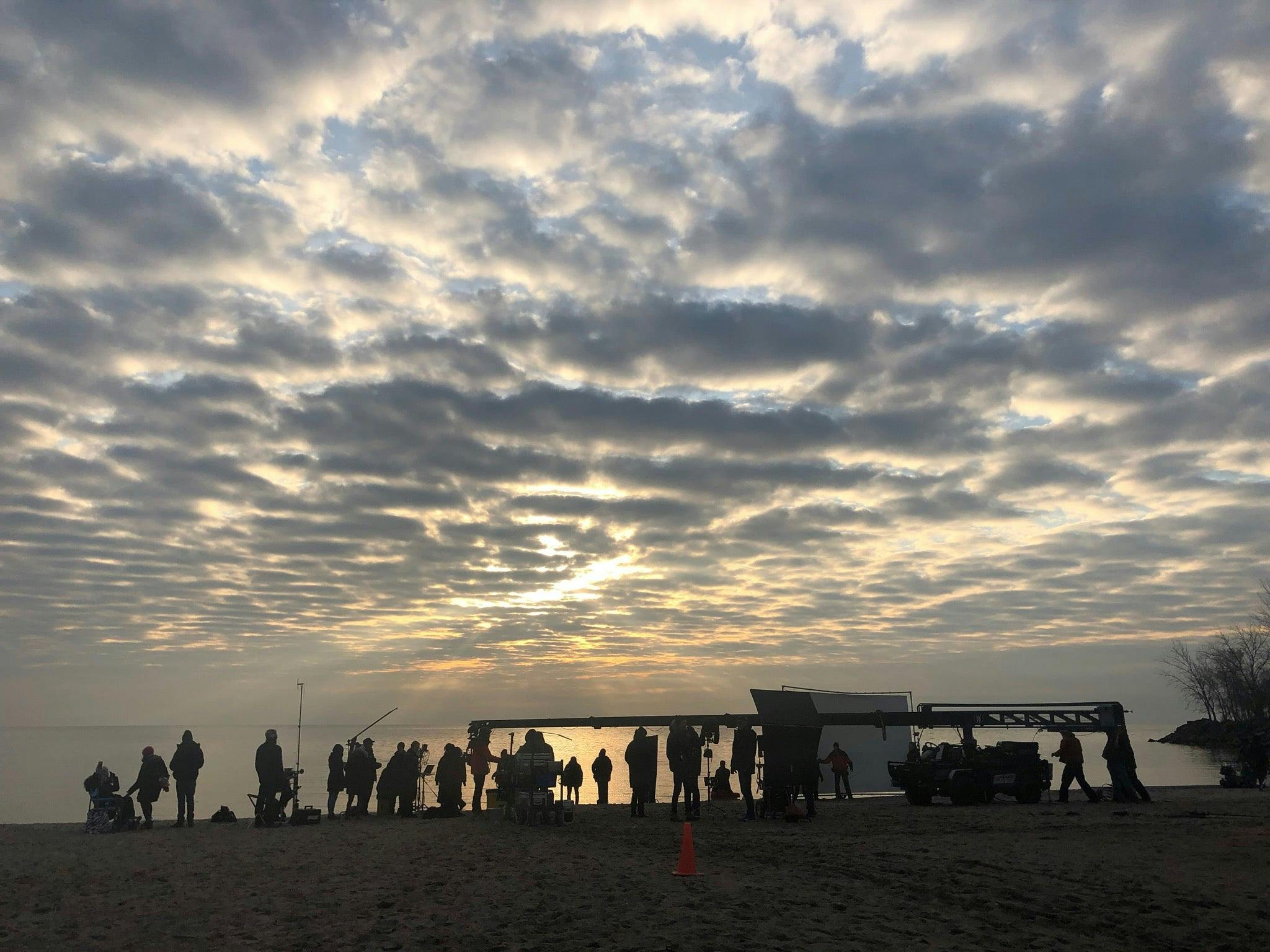
Olatunde Osunsanmi
When Alex pitched me the opening for 213, I imagined a beach with crashing waves. I wanted to emphasize the water, and the liquid violence that I would capture in cinematic glory. And I prepped for all of this… only to go location scouting and realize that Toronto’s lakeside beaches don’t have crashing waves. I knew this practically, but my Southern Californian heart couldn’t let go of the idea of actual waves until I was smacked face-on with the reality of it. But, in the end, the calm water worked out much better. It fit in with the serenity of Sarek’s emotional state before he reaches Burnham.
Considering where we left off in 212, this was a wonderful way to come in to 213. It was so unexpected.
There’s nothing like shooting a sunrise. You get everyone there predawn…it’s pitch black and you can’t see a thing, so you’re setting up in darkness. Then, you hurry everyone to get ready before the sun rises… and we still missed it! That morning, the sun came up behind clouds, so we couldn’t see it! It wasn’t until take seven that it appeared and we could photograph it.
These James Frain (Sarek) and Mia Kirshner (Amanda) scenes are so satisfying to shoot. The emotional precision of these actors fascinates me. In this scene I wanted to get into Sarek’s mind. What was he experiencing? What was he feeling, seeing? That’s why I put Burnham’s breathing in the audio track instead of Sarek’s. I felt like maybe he was seeing or feeling glimpses of her launch into battle in his mind’s eye.
213. “The Best Kiss We’ve Ever Seen.”
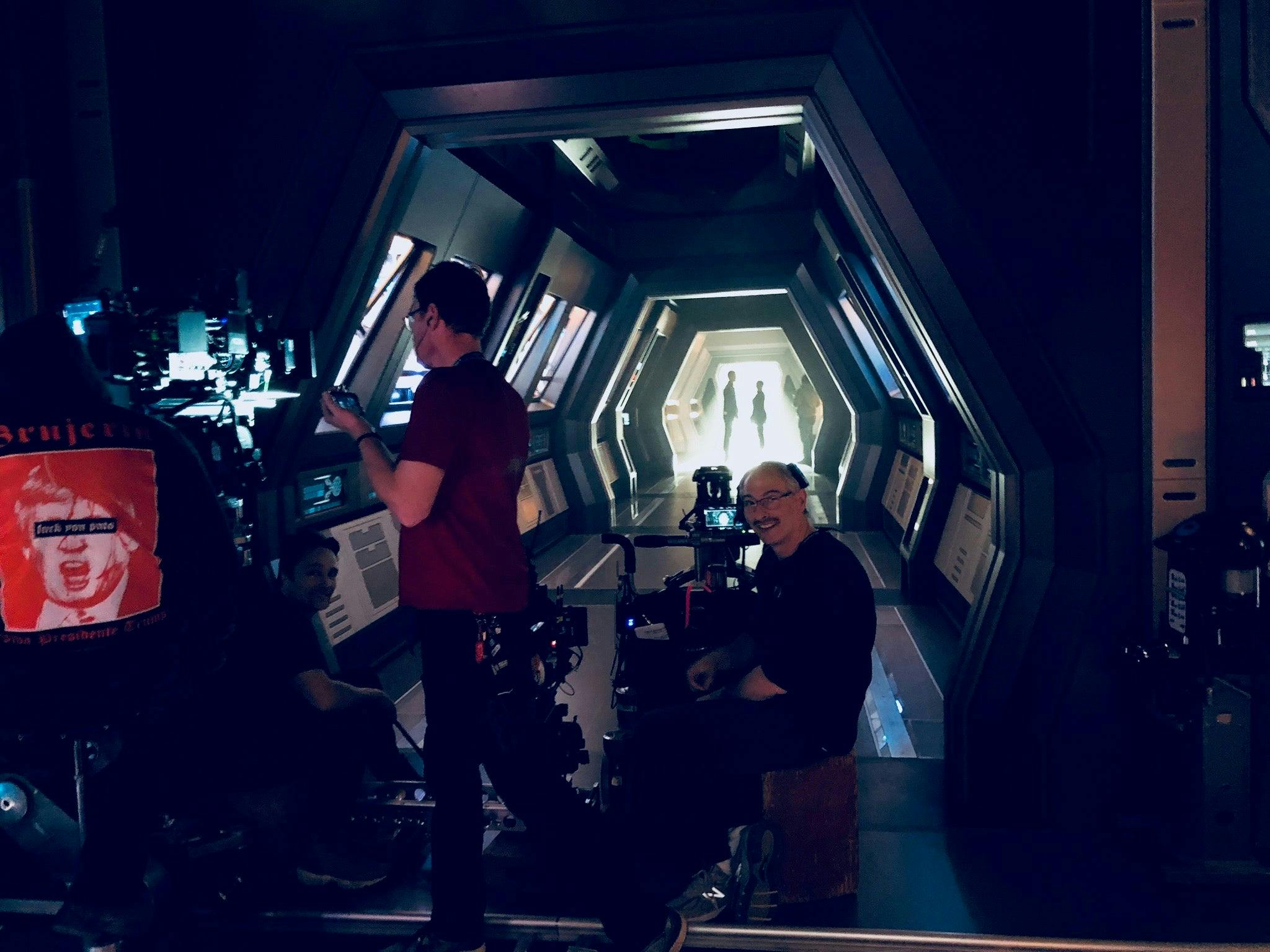
Olatunde Osunsanmi
In the script it literally said, “The best kiss we’ve ever seen,” and it was underlined, too. Never mind the emotional undercurrents in this scene, how was I going to capture the greatest kiss ever? Michelle Paradise was there that day, and she’d written that line. I kept looking at her silently thinking, “What the heck? Why are you putting this kind of crazy pressure on me?” And I didn’t know until afterward that Sonequa Martin-Green (Burnham) and Shazad Latif (Tyler) were thinking the exact same thing!

Olatunde Osunsanmi
I shot it wide first with three cameras on long lenses. I asked for a flare at the moment of the kiss, so we aimed a flashlight into the lens at just the right time. Then we added subtle blinking lights at the end of the hallway Sonequa walked down at the end of the scene.
214. Turbolift and Hallway Explosion
The turbolift hallway explosion in “Sorrow, Part 2” was a perfect example of crew working across departments for a seamless experience. VFX started the shot, then it was handed over to grips who built the camera’s descender rig that dives down into the set. Then that was handed over to our stunt crew, who rigged the characters on wires. The stunt was executed simultaneously by SFX with what they call — wait for it — Dragon Farts: high-powered flame throwers that provide fire bursts. Then those flames are mixed in with air cannons that launch debris. I used swing and tilt lenses after the explosion to get into their emotional, disorientated state.
Below is a Dragon Fart test we shot before we shot the final sequence. We wanted to test how far the fire would blast to make sure it was safe for cast and stunts.
Testing the Dragon Farts
213. Hallway Goodbye Scene
Fifteen lead actors performing a dramatic scene while shoved together in a narrow hallway is one of the most difficult things a director can be asked to shoot! We had three cameras and set about the task of getting close-ups on each character. Fortunately, we had the help of the hallway hub that allowed us to open things up a bit.
213. Discovery Bridge Goodbye Scene

Olatunde Osunsanmi
This is the scene where Burnham informs the rest of the team of the plan for her to go into the future alone. It actually occurs before the hallway scene above, but we shot this scene afterwards. Sonequa was so, so good in this scene. She’s playing many emotions seamlessly. And she does it effortlessly day in and day out. The gravity of her performance anchors the scene, giving everyone else's performance something to orbit around. Also I should add, this is the most actors we’ve ever had on the bridge! 17!
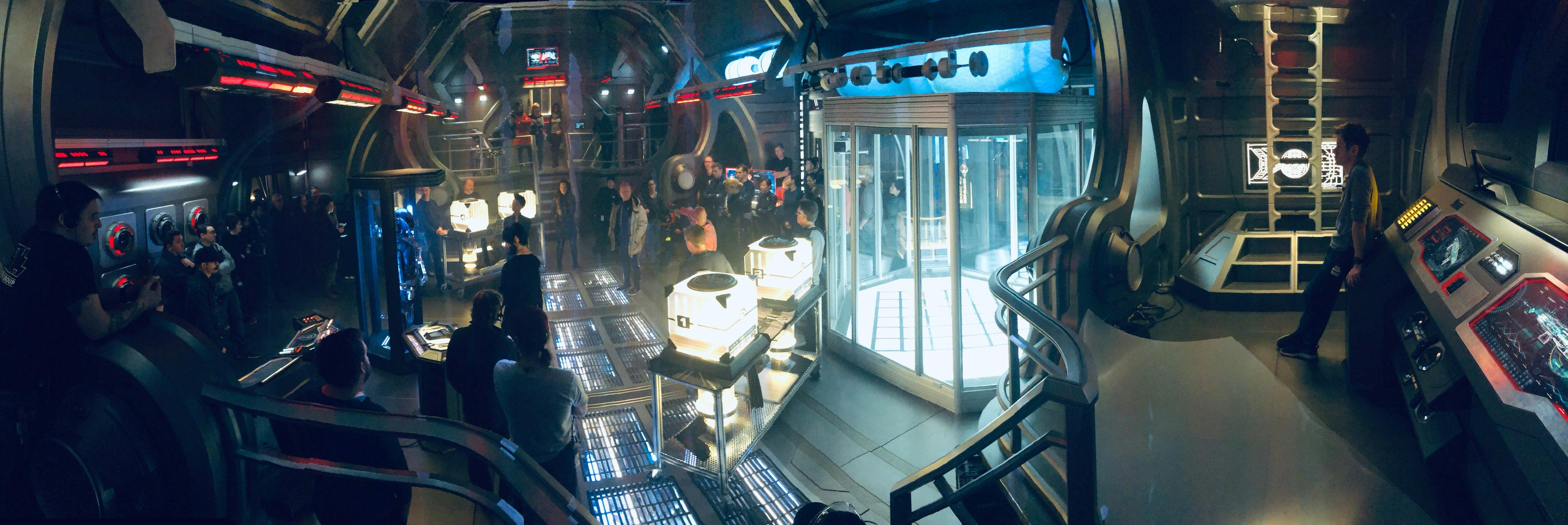
Olatunde Osunsanmi
214. Building the Timesuit in Engineering
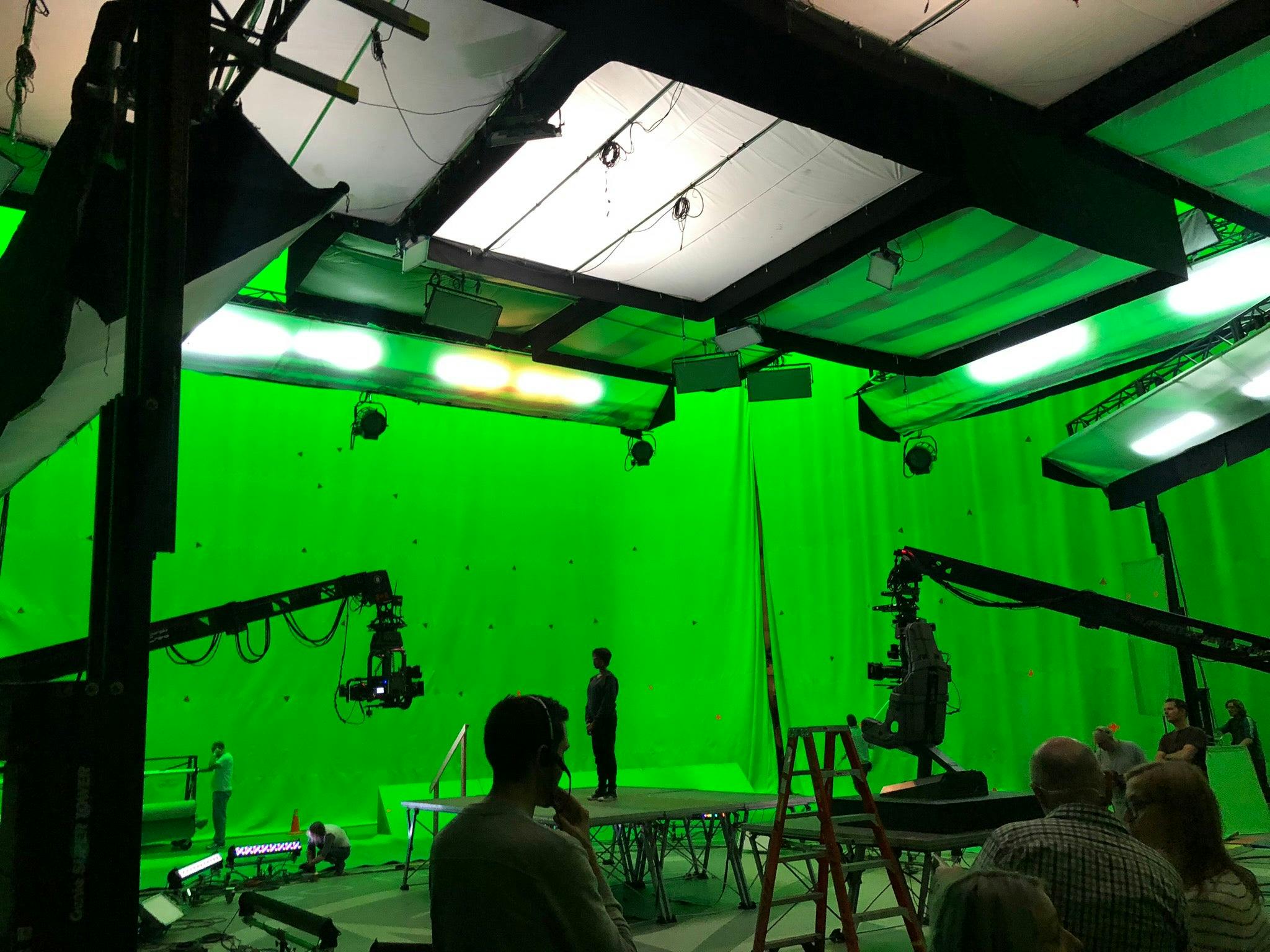
Olatunde Osunsanmi
I decided to do the Discovery engineering scenes in a oner to convey the urgency of getting the suit built, and the efficiency with which the crew was working to achieve it. Oners are challenging, because not only does the camera operator have to hit their mark, but the cast have to hit their marks and deliver the lines in time. The scene’s "focus puller" has to hit his mark, and the Director of Photography has to work with the light board operator to raise and dim the lights on cue as the actors land and leave their spots. It’s truly a dance!
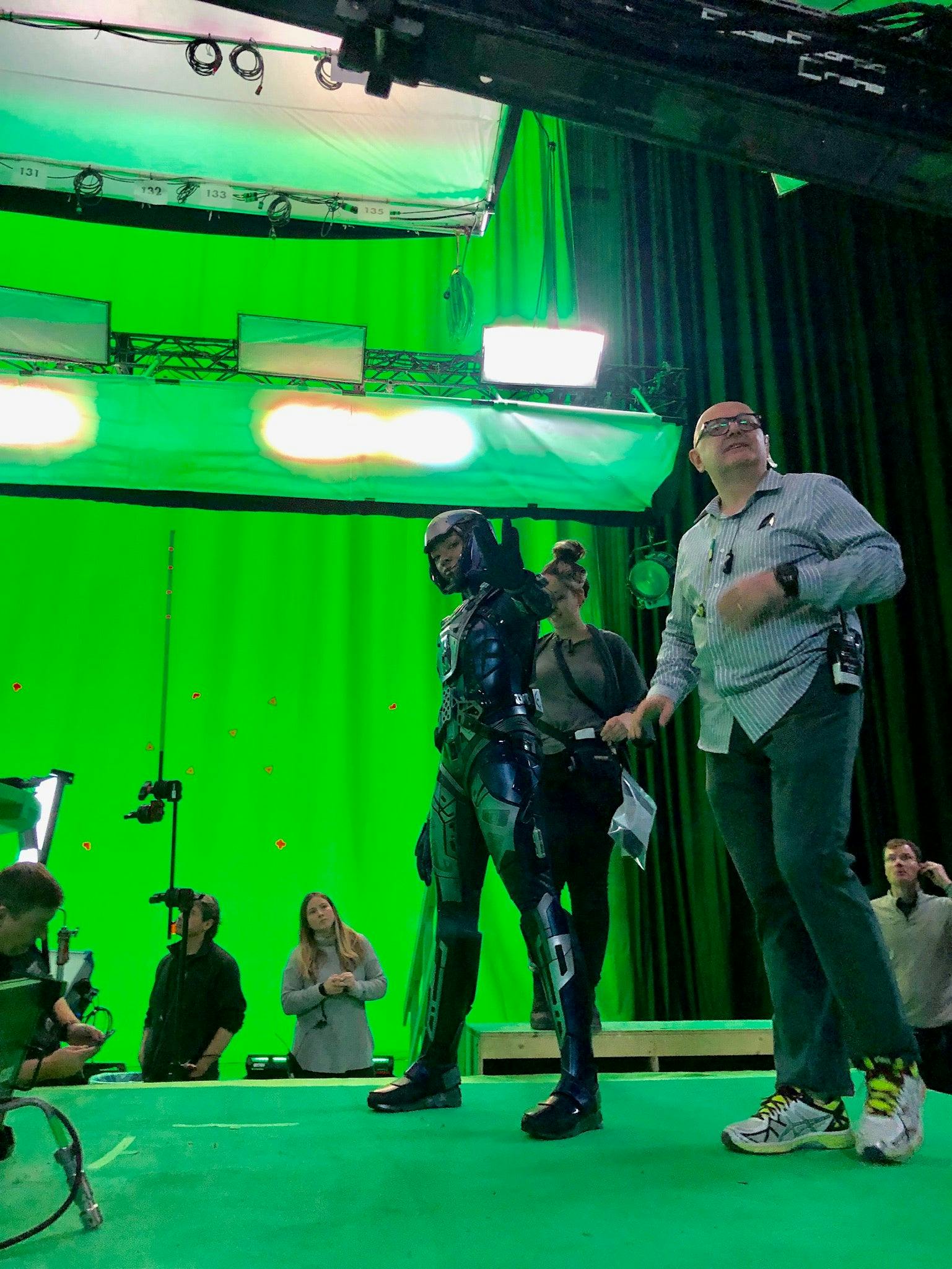
Olatunde Osunsanmi
214. Red Angel Launch, to the Spock Goodbye
We shot Burnham’s launch through the battle, all the way to her goodbye with Spock (Ethan Peck) over the course of two days. Of course, the launch through the battle is 99 percent CG, but we did shoot Burnham’s face inside the helmet. Those storyboards I mentioned earlier? This sequence made up 50 percent of them! Not only did Sonequa and Ethan shoot these scenes over two days, the two days weren’t consecutive due to scheduling constraints and different set configurations needed to get their coverage. The two days were three days apart, but these two didn’t skip a beat.
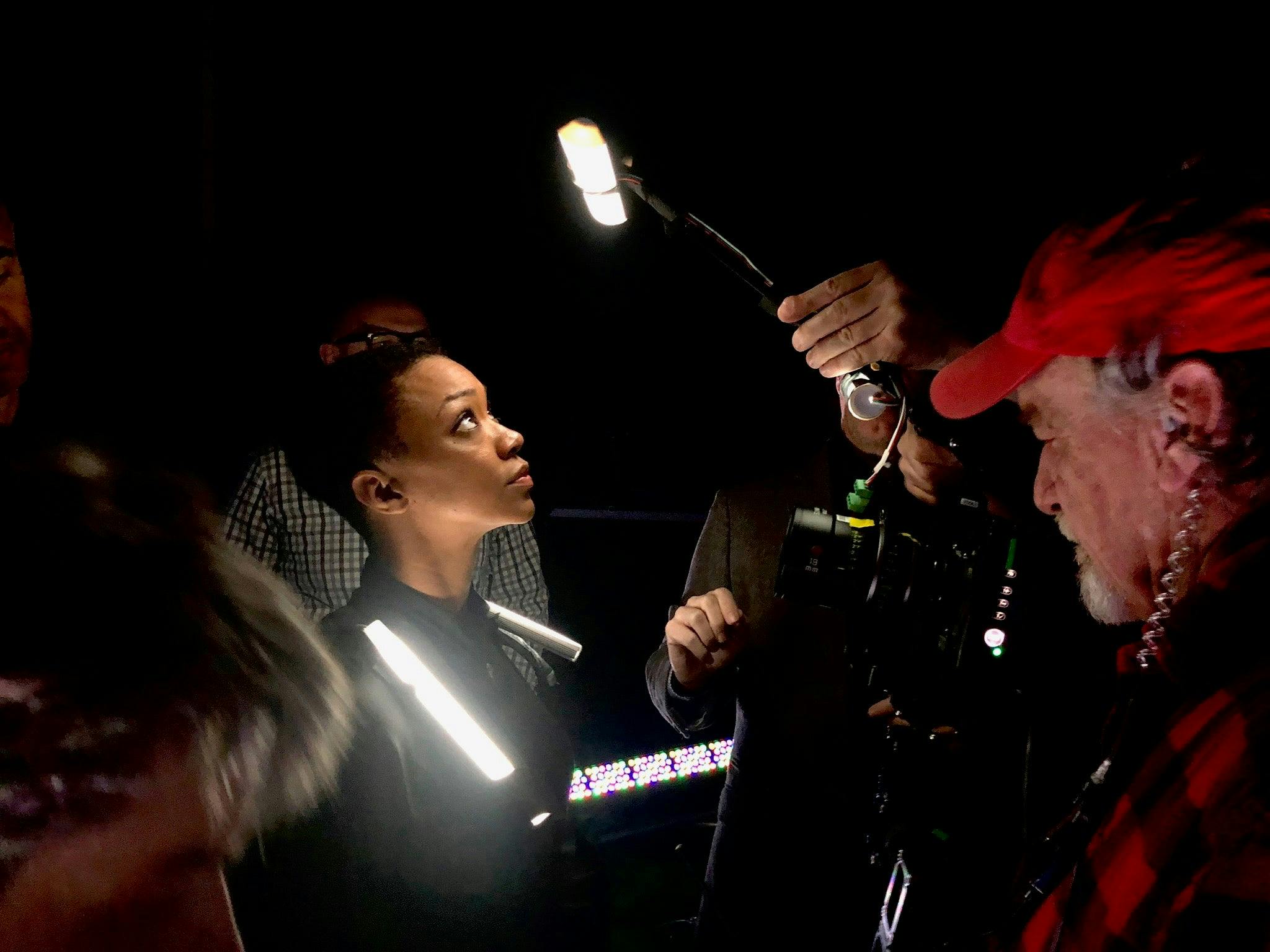
Olatunde Osunsanmi
Because of the height of the platform the actors were standing/sitting on, I employed two techno cranes simultaneously, and for the interior helmet shots we attached a body camera to Sonequa so the camera would be locked to her movements.
214. The Time Jump
The first time Burnham successfully operates the time suit and pushes the holo button, the world goes two-dimensional. The idea here was to show what it would look like if you stepped out of time, if you were able to view the universe from outside the arrow of the space time continuum. Would it be wrapped around you? Or would you be able to see everything in two-dimensions, as if reality itself were flat? We had many hours of discussions with the the shooting crew and VFX about this sequence before we finalized plans for it.
We shot Sonequa in her suit for the closeups. But then for the wide shots we went 100 percent CG. The sparks flying by her in closeup shots were customized by Darcy just for this moment. I nicknamed them marshmallows because when they hit they didn’t cause the same type of damage that traditional sparks do. We shot them at 800 frames per second (FPS) with the phantom camera, and then also used our Arri at 200 FPS for off angles.
Once she goes through the wormhole, Sonequa was shot against green screen and the VFX team did all the spark and streaking work, even for her closeups.
214. The Hallway of Gravity
This sequence was a whole lot of fun to shoot. This all came about when Alex issued a challenge to me: There had to be a fight in the hallways between Georgiou (Michelle Yeoh), Leland (Alan van Sprang) and Nahn (Rachael Ancheril), and it would need to be something different from what we’d done already.
I immediately thought about artificial gravity and that it would be great to have a Trek version of a Kubrick moment (or a Trek version of an Inception moment) but all motivated by the ship losing gravity due to a major phaser hit. During prep, almost everyone thought I was bananas. Build a rotating set? Stage a fight in it? How were we supposed to do that for a TV show? But when I told Alex, all he said was, “Yeah, cool.” And I was like, that’s it?!!! I knew Alex would say it was too expensive, or too complicated. Or something. But all he said was, “Yeah, cool,” giving me permission to see my dream scene realized. I thought it was wonderful that he had such faith in us as crew, and that he didn’t think for a moment we couldn’t pull it off.
Hallway of Gravity Video
Kudos to Darcy, our FX guy, for getting the rotisserie floor done, Tamara (Deverell) for figuring out a way to build this hallway in it, and to Chris McGuire for choreographing an awesome fight in it. It’s not easy moving around when gravity is switching around on you. It’s very disorientating for the actors inside. And this type of thing doesn’t happen without Executive Producer Frank Siracusa and Producer Thom Pretak figuring out how to find the money to pay for it in the first place. As big a show as we are, we don’t have an unlimited amount of money. Paying for that, while not sacrificing other production values, was quite the conundrum, but Thom never once complained.
The First Day on the Enterprise
Tamara did a phenomenal job with this bridge.
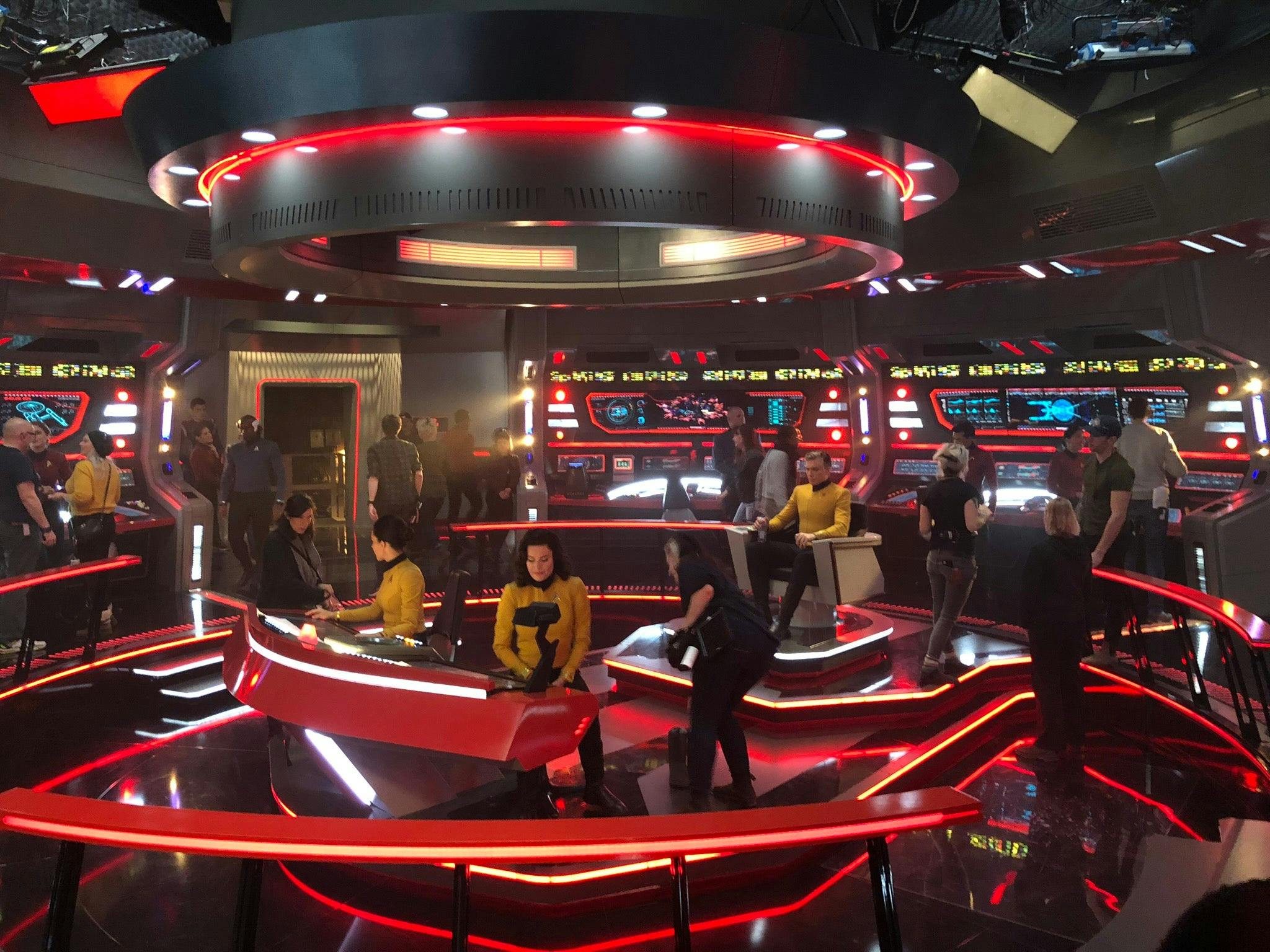
Olatunde Osunsanmi
The first day we walked onto our new Enterprise bridge was like being injected with a billion shots of adrenaline. We were at the end of a long shoot, and this was one of those days where it felt like we were back on day one. You couldn’t wipe the grin off of anyone’s face.
From the beginning, Alex had insisted that the lighting on the bridge make it feel like an inviting place. The mood on the Enterprise needed to be happier than it was on any of our other ships thus far. You could tell, once we had everyone on set, that we’d succeeded, and we really leaned into that as far as we could. Glen Keenan (Director of Photography) had nailed it throughout the shoot, and he brought this look home as well.
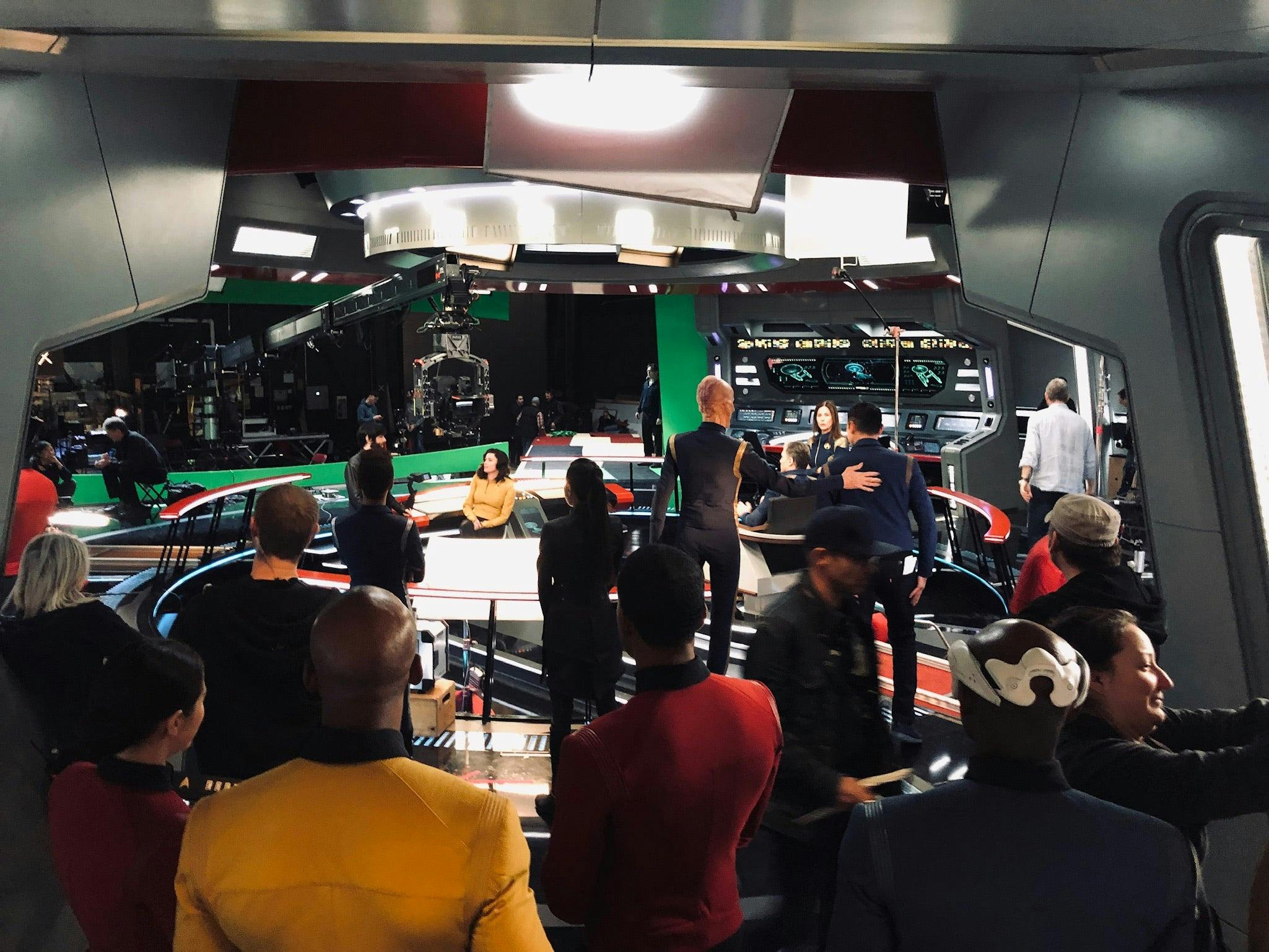
Olatunde Osunsanmi
It was quite interesting working with an entirely new bridge crew than Discovery. They learned how to push the buttons, what does what, and where to look. We learned how to shoot them, and what angles looked best of this new bridge, for the right emotions. After half a day's work it was like we’d been there forever.
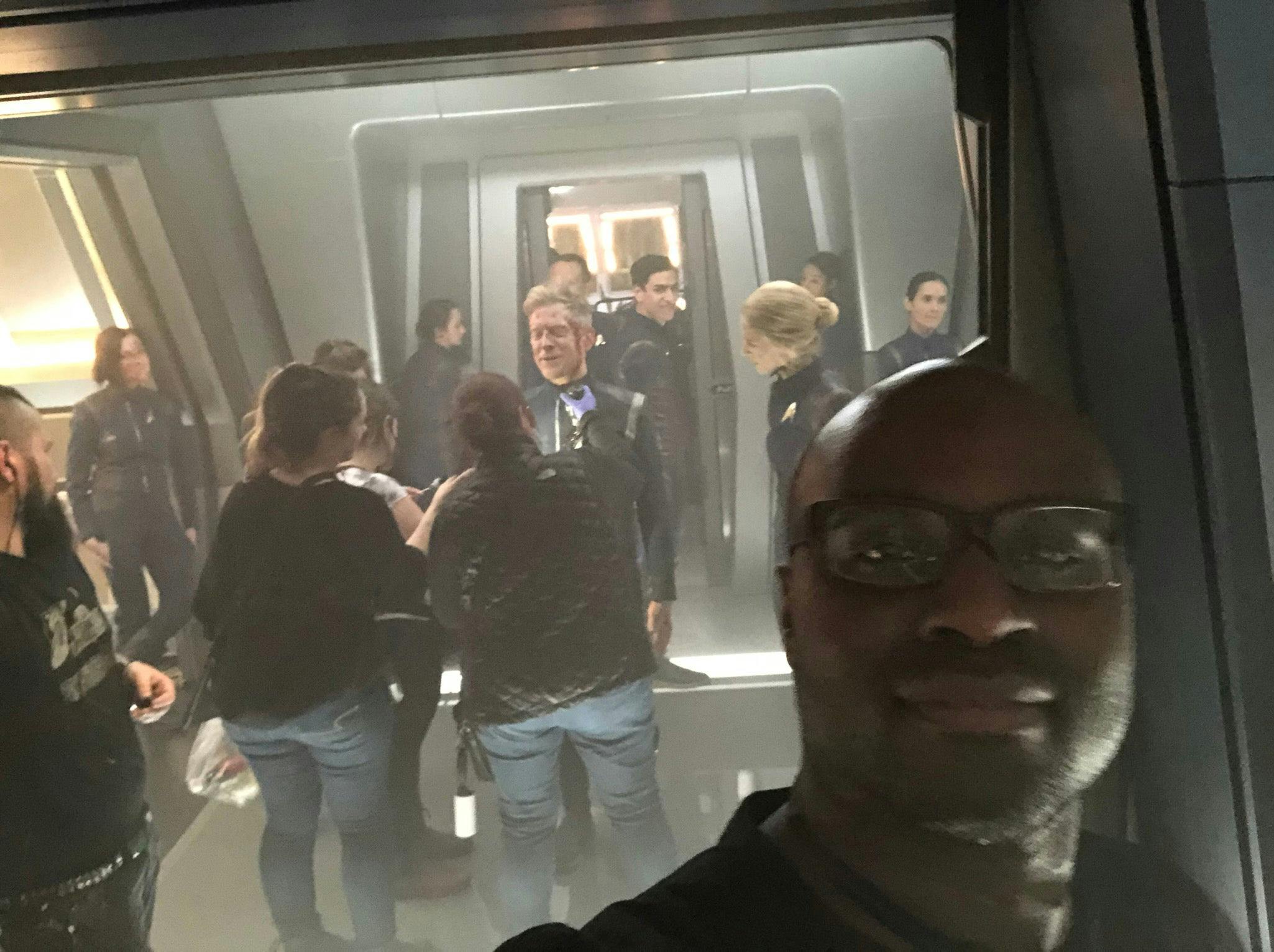
Olatunde Osunsanmi
Shooting both parts of “Such Sweet Sorrow” was a mind-blowing experience, and I can’t wait to see what challenges Star Trek throws my way next. If both “Sorrow”’s have taught me anything, it’s that with the help of our amazing cast and crew, I’ll definitely be able to meet them.
Till next time!
Star Trek: Discovery streams exclusively on CBS All Access in the United States and is distributed concurrently by CBS Studios International on Netflix in 188 countries and in Canada on Bell Media’s Space Channel and OTT service Crave.

